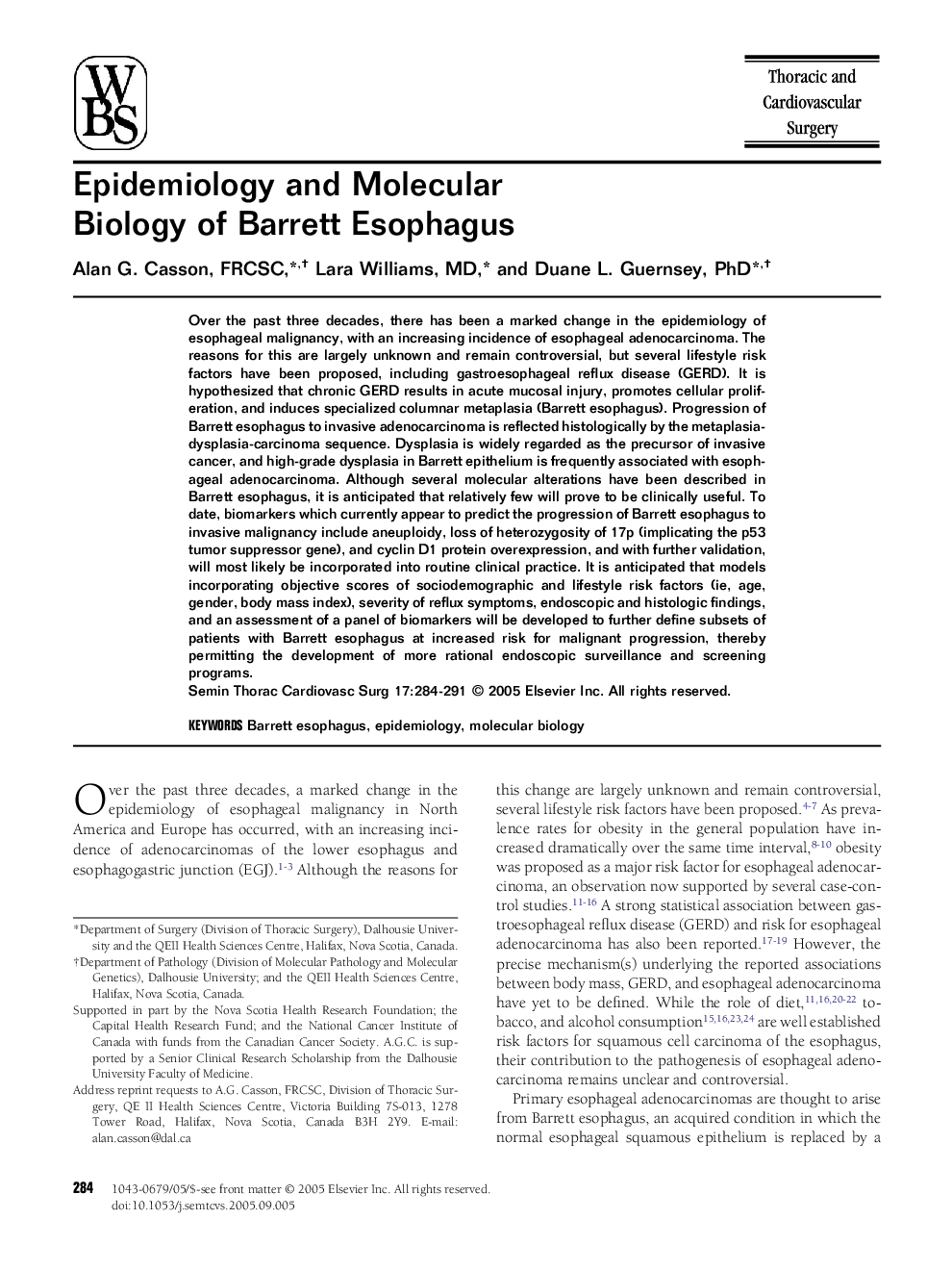| Article ID | Journal | Published Year | Pages | File Type |
|---|---|---|---|---|
| 9184291 | Seminars in Thoracic and Cardiovascular Surgery | 2005 | 8 Pages |
Abstract
Over the past three decades, there has been a marked change in the epidemiology of esophageal malignancy, with an increasing incidence of esophageal adenocarcinoma. The reasons for this are largely unknown and remain controversial, but several lifestyle risk factors have been proposed, including gastroesophageal reflux disease (GERD). It is hypothesized that chronic GERD results in acute mucosal injury, promotes cellular proliferation, and induces specialized columnar metaplasia (Barrett esophagus). Progression of Barrett esophagus to invasive adenocarcinoma is reflected histologically by the metaplasia-dysplasia-carcinoma sequence. Dysplasia is widely regarded as the precursor of invasive cancer, and high-grade dysplasia in Barrett epithelium is frequently associated with esophageal adenocarcinoma. Although several molecular alterations have been described in Barrett esophagus, it is anticipated that relatively few will prove to be clinically useful. To date, biomarkers which currently appear to predict the progression of Barrett esophagus to invasive malignancy include aneuploidy, loss of heterozygosity of 17p (implicating the p53 tumor suppressor gene), and cyclin D1 protein overexpression, and with further validation, will most likely be incorporated into routine clinical practice. It is anticipated that models incorporating objective scores of sociodemographic and lifestyle risk factors (ie, age, gender, body mass index), severity of reflux symptoms, endoscopic and histologic findings, and an assessment of a panel of biomarkers will be developed to further define subsets of patients with Barrett esophagus at increased risk for malignant progression, thereby permitting the development of more rational endoscopic surveillance and screening programs.
Related Topics
Health Sciences
Medicine and Dentistry
Cardiology and Cardiovascular Medicine
Authors
Alan G. (FRCSC), Lara MD, Duane L. PhD,
